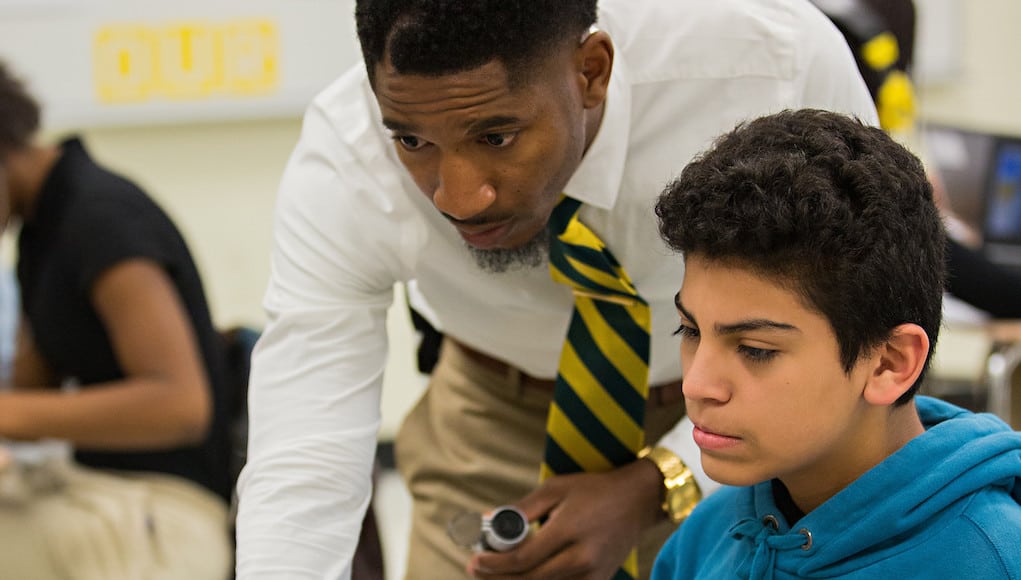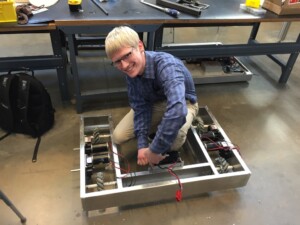Reflections on #HowIKnow: A Formative Assessment Project

This blog originally ran on the Michael & Susan Dell Foundation site on April 11, 2018
Since the kickoff of the #HowIKnow project last fall, we have been working with each district team in Austin, Dallas, and Tulsa to design and implement professional learning plans with 60 pilot teachers. Even before we learn from these teachers what works best in the classroom, we’ve already identified two key lessons to share about professional development in formative assessment practice.
Takeaway 1: There are different elements of successful professional learning
The first is a definition of effective professional development. This report does a great job of distilling out key elements and is a really helpful checklist to keep in mind as we consider ‘how’ teachers may learn best about formative assessment practice strategies.
The second thing we’ve kept in mind is a clear notion of ‘what’ they need to know to engage students in daily classroom level feedback loops. Formative assessment practice is a multi-dimensional process, especially given that both teachers and students are active players. As context, we’re using the FARROP rubric to guide our work in this project:

#HowIKnow pilot teachers focus their professional learning on one or more dimensions of the rubric, based on data from periodic classroom observations, which detail their relative strengths and areas of opportunity. I’d assumed that teachers might start with any dimension that made sense to them, given what the data showed and their specific areas of interest.
Takeaway 2: There is a learning progression for teachers
Turns out, it matters where teachers begin their learning experience, because certain skills are prerequisites to success in other dimensions. In fact, the 10 dimensions, depicted in a circle above, are really more of a progression. A huge thanks to Dr. Susan Brookhart for this critical insight. What follows is ‘borrowed’ from professional learning recommendations she’s provided to our pilot districts.
Here’s how it works:
1. Three formative assessment dimensions are foundational to the entire practice and may be therefore addressed as a triad in professional learning experiences: Learning Goals, Criteria for Success, Tasks and Activities that Elicit Evidence of Student Learning. Before teachers look to tackle more advanced strategies like peer assessment or begin to layer on technology tools, they should first work to become proficient at setting and sharing lesson-sized learning targets, (co-)creating success criteria with students so that all are clear on the vision for excellence and designing clear and engaging activities by which students will demonstrate their progress towards the learning goals.
2. Once learning goals and success criteria are clearly established and communicated, teachers begin to use them to engage students in an ongoing conversation about their learning. Besides the obvious value of communicating with students directly about their progress, this Descriptive Teacher Feedback serves as an important model for how students can use these same success criteria to create their own action plans to move learning forward. Thus, teacher feedback and Student Self-Assessment are the next two logical dimensions for teachers to tackle as they work to improve their formative assessment practice.
3. After (or sometimes, as) teachers and students become proficient in feedback and self-assessment, teachers may now turn their attention towards the quality of their Questioning Strategies to Elicit Evidence of Student Learning, the richness of the student thought processes on display during class discussions (Extended Thinking During Discussion), and the ways in which they will use all that they learn about students’ progress to adjust instruction (Using Evidence to Inform Ongoing Teaching and Learning). Advanced discussion skills are yet another way to make student learning visible during the actual lesson, and along with evidence of learning from other tasks and activities, supports teachers to make ‘in the moment’ decisions about how the lesson should proceed.
4. Student Peer Feedback is in some ways the ‘capstone’ experience of formative assessment practice. Successful peer assessment hinges, in fact, on the presence of solid and consistent formative assessment practice constructs in other parts of the classroom experience. For students to effectively provide feedback to each other, they must draw on lessons learned from receiving criteria-based feedback from their teacher, assessing their own progress, and crafting plans to address learning gaps. Peer feedback should, therefore, be the last formative assessment dimension introduced into a teacher’s practice.
5. A Collaborative Culture of Learning develops as a result of, and therefore alongside, the other dimensions. As teachers begin to share learning goals and success criteria with students, they are effectively inviting them into a shared learning experience, with ownership on both sides of the table. As the other elements of a well implemented formative assessment practice are layered in, the classroom culture will continue to evolve towards one which is ever more collaborative and supportive of student agency.
Guided by this information, and data on current practice, the district teams are making thoughtful choices about where to focus teachers’ time. As the year continues, we’ll dive more into what each district is focused on, and what they’re learning along the way.
I’m so inspired by the work happening in the #HowIKnow project. Please take a moment to check it out, and keep dropping by! We will soon have the chance to begin learning directly from the 60 pilot teachers in Austin, Dallas, and Tulsa.
For more, see:
- Scaling Formative Assessment: The How I Know Project
- What is Formative Assessment? Voices from Field
- The Student Role in Formative Assessment: How I Know Practitioner Guide
Cheryl Niehaus is Program Manager for Data Driven Education at the Michael & Susan Dell Foundation. Connect with her on Twitter: @CherylatMSDF
Stay in-the-know with all things EdTech and innovations in learning by signing up to receive the weekly Smart Update. This post includes mentions of a Getting Smart partner. For a full list of partners, affiliate organizations and all other disclosures, please see our Partner page.







Patti Shade
Very meaningful - resemblles the cyclic process of creative product development. #creativity #education #imagination #learning #innovation #CreativityCrusader #SkillsForToday